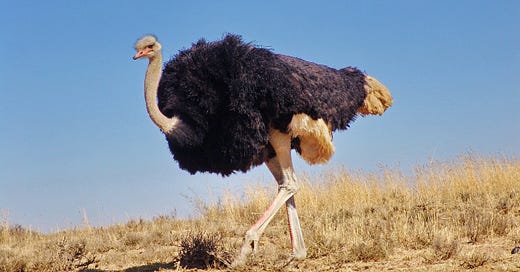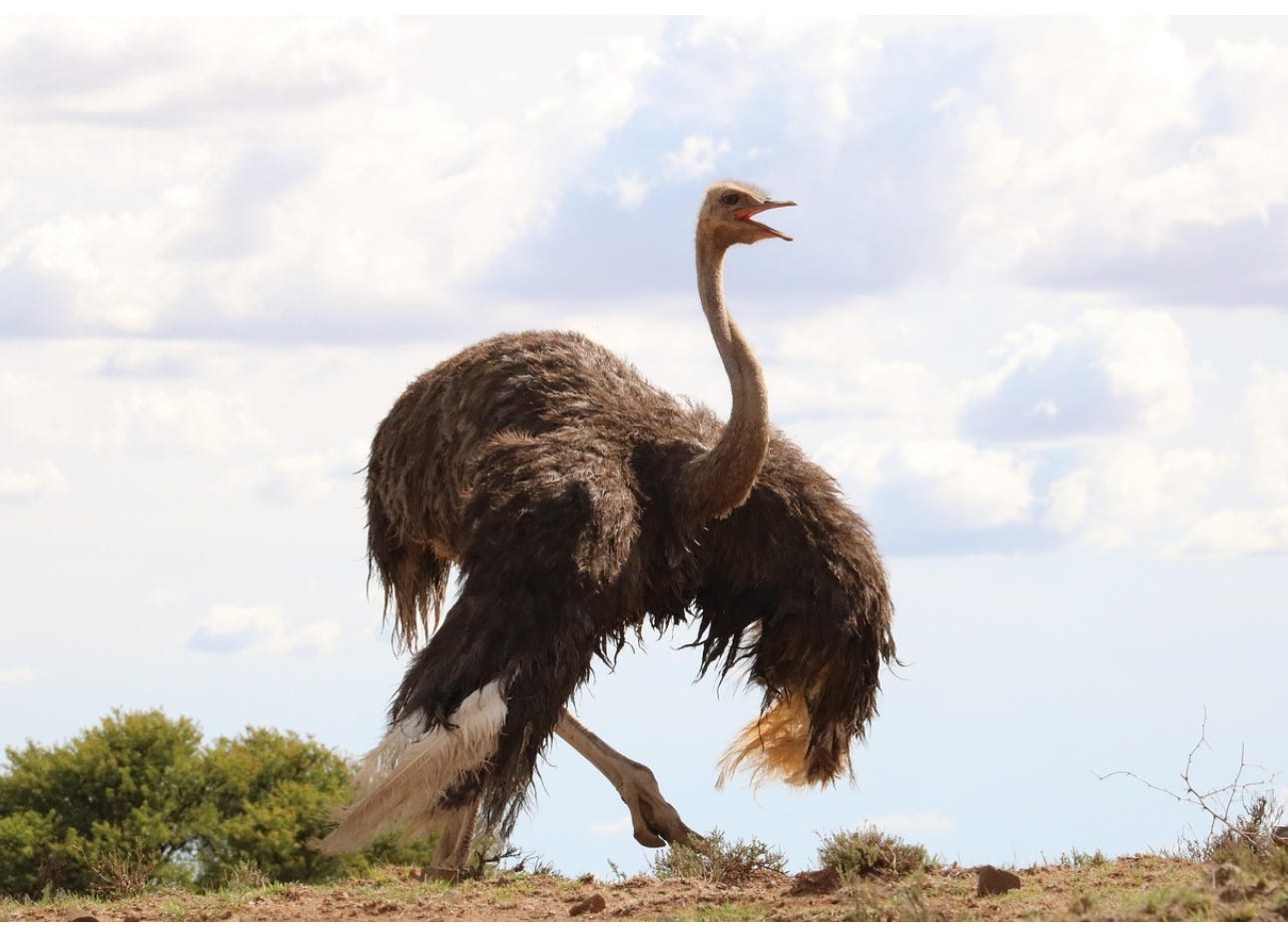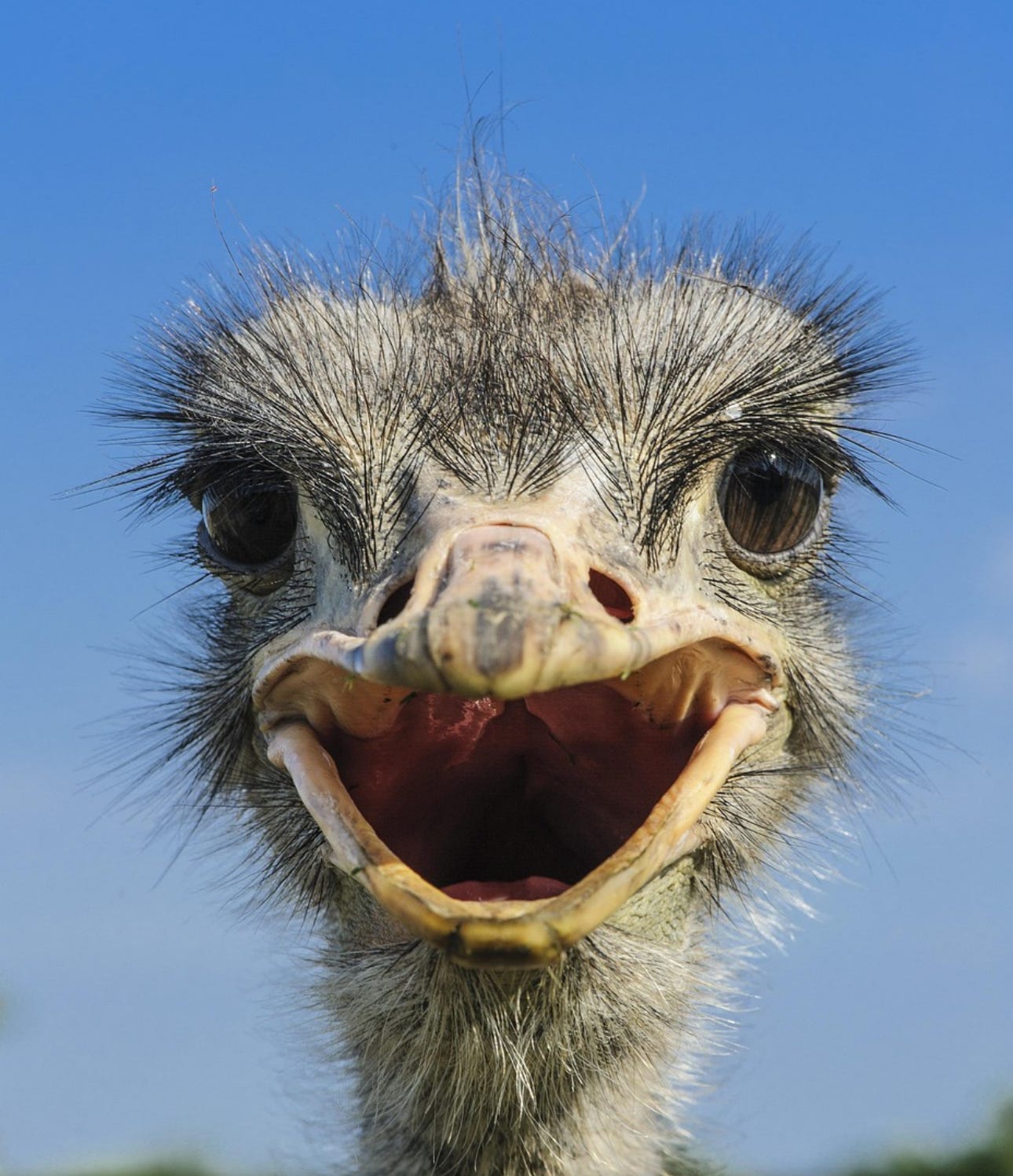One Planet News: Unpredictable and dangerous - how much do you know about the largest, heaviest and fastest bird?
One well-aimed kick can disable or kill a lion.
By Annette J Beveridge
The largest, heaviest and fastest bird in the world packs a real punch or should that be a powerful kick?
One well-aimed strike from an ostrich’s long-muscled leg is sufficient to kill a lion or other large predator. Most birds have four toes or more but the ostrich is the only bird to have just two toes. There is a deadly ten-centimetre sharp claw and one big toe, resembling a hoof, carries the bird’s weight.
The small toe aids with balance.
Unpredictable behaviour
Male ostriches may attack people during the breeding season. Growing up to 9 feet, and weighing the equivalent of two adult humans, these birds are strong, and dangerous. Behaviour can be unpredictable as the former Prime Minister Boris Johnson now knows when he left his car window open and was pecked while visiting a wildlife safari recently with one of his children.
Bird-brained and boggle-eyed
An ostrich may have the smallest brain but what it lacks in brain size, is improved by its cognitive function. The brain has a specialised neural pathway and can quickly process visual information with fast motor responses. Its survival-related behaviours are hardwired, which reduces extensive cognition but it is capable of complex social behaviours.
With a smaller brain, there is less energy needed for the maintenance of survival critical functions.
Eyes
The large eyes enable a bigger retina which captures additional detail and sharper vision. Because the eyes have a larger surface area, more light enters enabling the bird to see better in dim conditions. The position of the eyes provides an almost 360-degree field of vision which helps with the detection of predators. They are also able to judge distances when foraging or running with improved depth perception.
Speed
An ostrich may seem vulnerable as it roams across an expansive habitat but it is the fastest of all two-legged animals. If you think you might outrun a rather temperamental ostrich, think again. They can reach up to 43mph while humans can run at 5-6mph on average.
Read more: The brain-eating bird you might see in the UK
Habitat
Ostriches favour a variety of habitats.
They roam across hot savannahs and deserts and can be found in open woodlands across Eastern and Southern Africa and will often be seen in pairs or small or large groups.
In a small group, there will be a male leader and a dominant female. Males use their feathers in a flamboyant style and dance to attract hens while making booming sounds.
The breeding season begins in June or July each year. The female lays one egg every other day with the dominant female laying between seven to ten eggs in the nest. The male mates with multiple hens in the group and then digs out a shallow nest for the entire group to use. The other females lay their eggs outside of the nest.
An ostrich egg is the largest of all land animals.
Once the eggs are laid, the male leader and dominant female incubate them. This takes approximately 42 days before they hatch fully feathered and ready to run. At birth, the chicks have grey, spiky feathers and at one month, the chick can run up to 35mph but will still be at risk from predators.
Playing an important part of the ecosystem
These birds play an important role in the ecosystem. Omnivores, the birds eat fruits, roots, seeds, and leaves, but will also take insects, lizards, rodents, and other creatures in their habitat. They can survive two or more weeks without water getting sufficient water intake from plants. They spread the seeds of various plants but also control rodent populations.
Ostriches have three stomachs. The glandular stomach acts as the gall bladder. The muscular stomach grinds up stones, and pebbles, which are passed to the intestines which stretch to a considerable 46 ft in length. Ostriches also secrete urine separately from faeces.
Ostriches form symbiotic relationships with other animals in the ecosystem including gazelles allowing them to share their feeding grounds. The gazelles get to graze but the benefit to the birds is that they provide an early warning when predators are about.
These impressive birds can live up to 40 years in the wild and up to 50 years in captivity.







